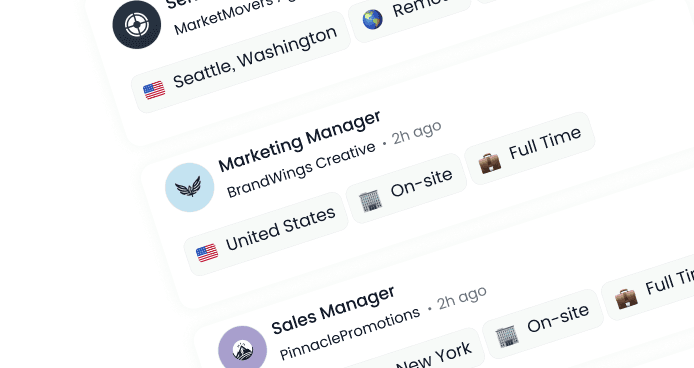Moving Beyond Job Titles: Why Skills-Based Hiring Wins
Published:
September 22, 2025
All
AI Recruitment
Recruiting Tips
Employer Branding
Workforce Planning
Job titles age fast. Skills tell the real story. Here’s why the future of hiring is skills-first.
Introduction
What if your best candidate never held the “right” title? In today’s market, skills are the real drivers of performance and the moving targets employers need to watch. By 2030, it’s estimated that 70% of the skills used in most jobs will change, largely due to shifts in technology and work. And this change is already here—between 2021 and 2024, nearly one-third of the skills required for the average job have evolved.
This makes one thing clear: hiring by job title alone is no longer enough. Companies that want to stay ahead need to think in terms of competencies, adaptability, and long-term growth. Skills-based hiring provides that foundation.
Why Job Titles Hold Teams Back
Traditional hiring practices lean heavily on job titles, tenure, and education. On the surface, this feels safe. But in reality, it’s risky and limiting. Titles vary widely across industries and companies. A “Specialist” in one place could mean “strategic lead” in another.
When hiring is reduced to keyword-matching on resumes, you miss what really matters: the skills a candidate can bring to the table. The result? Small talent pools, cookie-cutter shortlists, higher churn, and teams that constantly backfill rather than build capacity.
What Skills-Based Hiring Actually Changes
A skills-first approach reframes every step of the process:
Competency mapping: Define the capabilities that deliver results—not just the title that used to hold them.
Skills ontology: Standardize and recognize overlapping skills across roles.
Evidence-based evaluation: Use work samples, job simulations, and structured interviews to measure actual ability.
Talent pathways: Hire for adjacent skills and upskill existing staff, widening pipelines and boosting retention.
This approach aligns recruitment, screening, and development around what people can do now—and what they can grow into.
Where AI Strengthens Skills-Based Hiring
Skills-based hiring is ultimately a choice employers make. But AI can support and scale that choice. Instead of sifting through thousands of resumes by hand, AI tools—like DigitalHire—help recruiters focus on the right candidates faster by:
Smart matching: Comparing the skills a candidate lists (and those inferred from their experience) to the role’s requirements.
Uncovering hidden talent: Surfacing candidates with adjacent or transferable skills who might be overlooked by a job-title filter.
Reducing noise: Automating repetitive filtering so recruiters can spend time evaluating people, not parsing resumes.
Scaling consistency: Applying skills-based hiring principles across high-volume applications without sacrificing quality.
A common misconception is that AI is taking over; however, Artificial Intelligence doesn’t replace judgment. It reduces the noise so that the people in the hiring team can make better decisions.
Fair Hiring Practices Start with Structure
Contrary to popular belief, bias hides in unstructured processes. Skills-based methods make the process explicit and easily auditable; call it merit-based. And people realize that, in some places, regulators are paying attention to AI-assisted decisions. New York City’s Local Law 144, for example, requires a bias audit and notices for automated employment decision tools.
Structure helps you comply. More importantly, it helps you hire fairly. Moreover, consistent rubrics, clear evidence, and transparent feedback reduce noise and improve candidate trust.
A Practical Playbook for Teams
Here are tips to consider as you start. Nothing fancy is required. Build momentum with a few durable steps:
Redefine the role around outcomes and skills
Ask hiring managers what results they need in 6–12 months and translate them into competencies.
Write a skills-first job post
Use plain language, highlight must-have vs. trainable skills, and invite candidates from adjacent roles.
Structure the screen
Use simple work samples, short situational tasks, and consistent scoring guides.
Use AI to reduce friction
Let AI enrich skill taxonomies, draft evaluation prompts, and rank responses—but keep humans in charge.
Review and iterate
Track diversity, time-to-fill, and quality-of-hire, then refine based on what works.
Building Resilience for the Future of Hiring
Titles age fast. Skills evolve. Teams that hire for learnability, collaboration, and problem-solving outperform when priorities shift. A skills-first model makes internal mobility easier, too. When you map competencies, you can redeploy talent as needs change and reduce external backfill.
This is how successful companies guard against volatility. They hire for present impact and future growth. They also build clearer ladders for emerging talent who may not have a “perfect” title yet.
Guardrails for Using AI Responsibly
When incorporating AI into hiring, keep checks in place:
Transparency: Tell candidates where and how automation is used.
Validity: Test that tools measure job-relevant skills.
Monitoring: Track for bias and recalibrate as needed.
Human oversight: Keep final decisions with recruiters and managers.
The Bottom Line
Job titles are shortcuts from an older era. Today, the data is clear: skills are changing fast, and hiring practices need to keep up.
A skills-first approach expands talent pipelines, improves match quality, and builds more resilient teams. And with the right use of AI, it’s possible to apply these principles at scale—saving time without losing the human touch.
If you’re ready to make the shift, start small with one role. Map the skills, structure the process, and let AI handle the heavy lifting on filtering. Then refine and scale.
Now, make the shift real, see how DigitalHire makes skills-based hiring simple. Discover AI job matching in action — start today.
FREE JOB POST
Looking to fill a position quickly? Post your job for free and reach top talent today!




